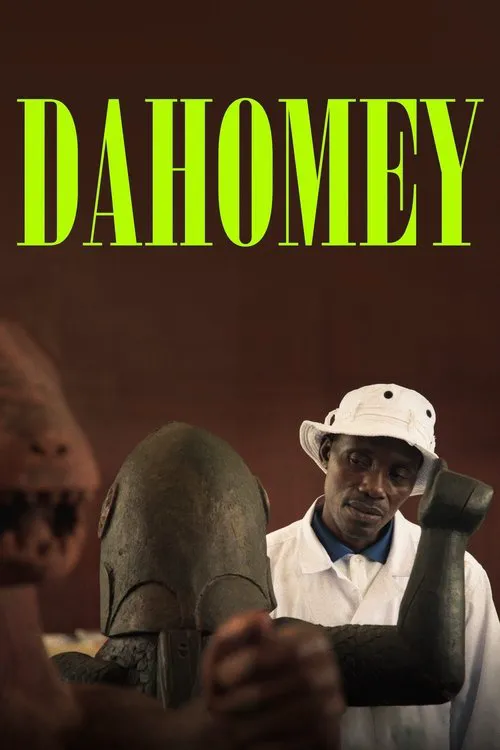Dahomey

Plot
Dahomey is a poignant and thought-provoking documentary that delves into the rich cultural heritage of a bygone era – that of the Dahomey kingdom, a once thriving West African kingdom that was ravaged by colonization. The film serves as a testament to the resilience of its people and a scathing critique of the destructive forces of colonialism. At the heart of Dahomey lies an extraordinary narrative: the repatriation of 26 of the kingdom's most treasured artifacts, taken by French colonizers in the 19th century and forcibly brought to Paris for display in museums. For over a century, these pieces, imbued with history and spiritual significance, were lost to their rightful owners, relegated to a life of glass cases and hushed whispers. Centuries later, with the winds of progress blowing, a few of these treasures, against all odds, made their way back to their ancestral home in modern-day Benin. The documentary chronicles the odyssey of these 26 artifacts, weaving a compelling tapestry of voices that transport viewers to the very heart of the Dahomey kingdom. Cultural art historians, their words laced with passion and conviction, recount the significance of these relics in the cultural and spiritual fabric of the kingdom. These experts shed light on the craftsmanship and symbolism embedded in each piece, revealing the intricate dance between the artisans and the spirits. One of the most striking aspects of Dahomey is its juxtaposition of past and present. The film seamlessly weaves the narrative of a bygone era with the lived experiences of modern-day Benin. Embattled university students, their faces etched with determination, recount the struggles of their forebears in the face of colonial oppression. Their voices, though marked by a sense of urgency, convey the depth of commitment to reclaiming their heritage. As the story unfolds, the artifacts themselves take center stage – their presence a poignant reminder of the kingdom's once-vibrant culture. Among these is the statue of a Dahomey warrior, which serves as the narrator of the film. Speaking in a low, gravelly voice, this statue recounts the tale of its people, of their struggles and triumphs, of their connection to the land and the spirits. His is a voice of quiet dignity, imbued with a deep sense of responsibility, and a steadfast commitment to telling the story of his people. Dahomey is not merely a documentary about the repatriation of artifacts; it is a searing indictment of colonialism's destructive forces. The film lays bare the ways in which colonial powers plundered the riches of native cultures, reducing their art and artifacts to mere relics of a forgotten era. The narrative is studded with haunting images of looted artifacts, suspended in glass cases, their faces obscured by hazy lights and sterile glass. Throughout the film, however, there exists a note of hope – an unyielding optimism that speaks to the human spirit's capacity for resilience and recovery. As the artifacts make their way back to their home, the sense of redemption and closure is palpable. The people of Dahomey, though bruised and battered by colonialism, stand tall, their dignity intact. Dahomey is a testament to the power of culture and heritage in defining our very identities. This documentary serves as a powerful reminder of the need to reclaim our shared histories and cultural legacy – to tell the stories that shape us, to honor the voices that have been silenced, and to celebrate the artifacts that continue to whisper the secrets of our collective past. As the credits roll, the statue of the Dahomey warrior whispers his final words, a poignant reminder of the journey of rediscovery that lies ahead. His voice, though still, echoes in the hearts of viewers, a haunting and unforgettable call to preserve the stories that bind us, and to protect the treasures that hold our collective heritage.
Reviews
Recommendations




